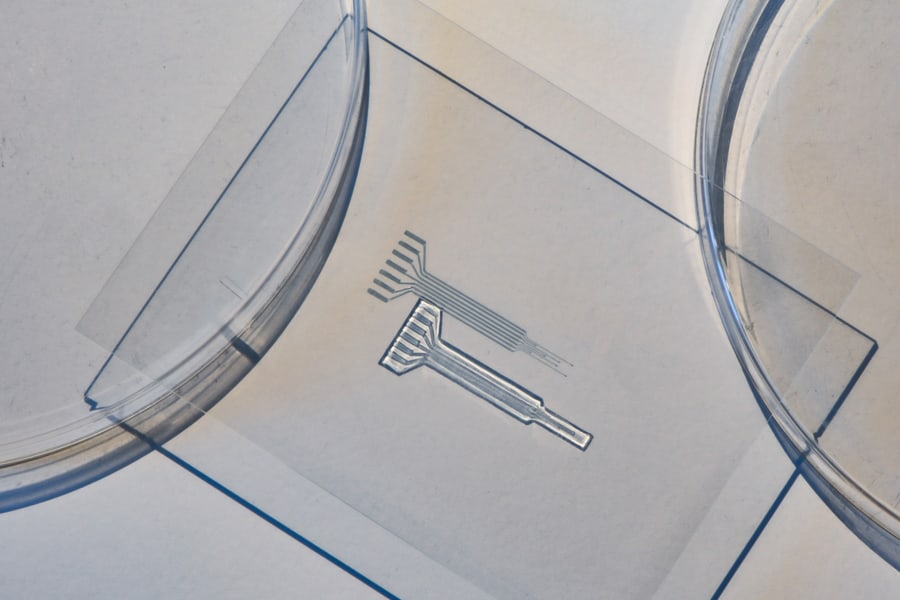
Regardless of their form and purpose, nearly all electronic implants incorporate electrodes — small conductive components that attach to tissues to electrically stimulate muscles and nerves. Most electrodes found in pacemakers and cochlear implants are made from metal. However, the performance of these implants can deteriorate over time due to the interaction between the metal and biological tissue.
Now, a team of researchers at MIT has created a metal-free, Jell-O-like material that is as soft and tough as biological tissue but can conduct electricity just like metals.
The material can be incorporated into printable ink, which the team patterned into flexible electrodes. The researchers hope the new material could one day replace metals as gel-based electrodes.
“We believe that for the first time, we have a tough, robust, Jell-O-like electrode that can potentially replace metal to stimulate nerves and interface with the heart, brain, and other organs in the body,” Xuanhe Zhao, study author and professor of mechanical engineering and of civil and environmental engineering at MIT, said in a press statement.
A new type of metal-free electrode
Most polymers have insulating properties, meaning they do not readily allow the flow of electricity. However, there’s a small group of polymers that can facilitate the passage of electrons through their structure. In the 1970s, scientists discovered the first polymers with high electrical conductivity –- work that was later honored with a Nobel Prize.
More recently, researchers have been exploring the use of conductive polymers in the development of soft and metal-free electrodes for various applications. The objective is to create flexible yet resilient electrically conductive films and patches. This is primarily achieved by blending particles of conductive polymers with hydrogel, a type of soft and porous polymer.
Unfortunately, the materials produced thus far have faced challenges. They either lacked strength and became brittle or demonstrated inadequate electrical performance. In their new study, the team at MIT found they needed a new way to mix hydrogels and conductive polymers to enhance the electrical and mechanical properties of both.
Such mixtures produced gels made of randomly dispersed polymer particles. The team realized that to preserve the electrical and mechanical strengths of the polymer and the hydrogel, both ingredients should be mixed so that they slightly repel. In this state, each could then link its respective polymers to form microscopic strands while also mixing as a whole.
A new formula
The researchers made adjustments to the formulation, changing the consistency of the gel to be more ink-like. This ink was used as a material for 3D printing. They printed the ink onto films composed of pure hydrogel, creating patterns akin to traditional metal electrodes. “We can customize geometries and shapes,” first author Thao Zhou said in a statement.
Afterward, they implanted the 3D-printed gel electrodes, resembling Jell-O in texture, onto the hearts, sciatic nerves, and spinal cords of rats. Experiments showed the devices were stable during the two-month testing period, causing minimal inflammation or scarring in the surrounding tissues.
The electrodes also successfully transmitted electrical impulses from the heart to an external monitor. They were also able to deliver controlled pulses to the sciatic nerve and spinal cord, leading to the stimulation of motor activity in the associated muscles and limbs. The team expects the material could be used in patients’ recovery from heart surgery.
The researchers are now focused on enhancing the durability and performance of the gel material. Their aim is to extend its lifespan and optimize its capabilities. The gel could serve as a soft electrical interface, enabling seamless connections between organs and long-term implants. Potential applications include its integration with pacemakers and deep-brain stimulators.
The study was published in the journal Nature Materials.









